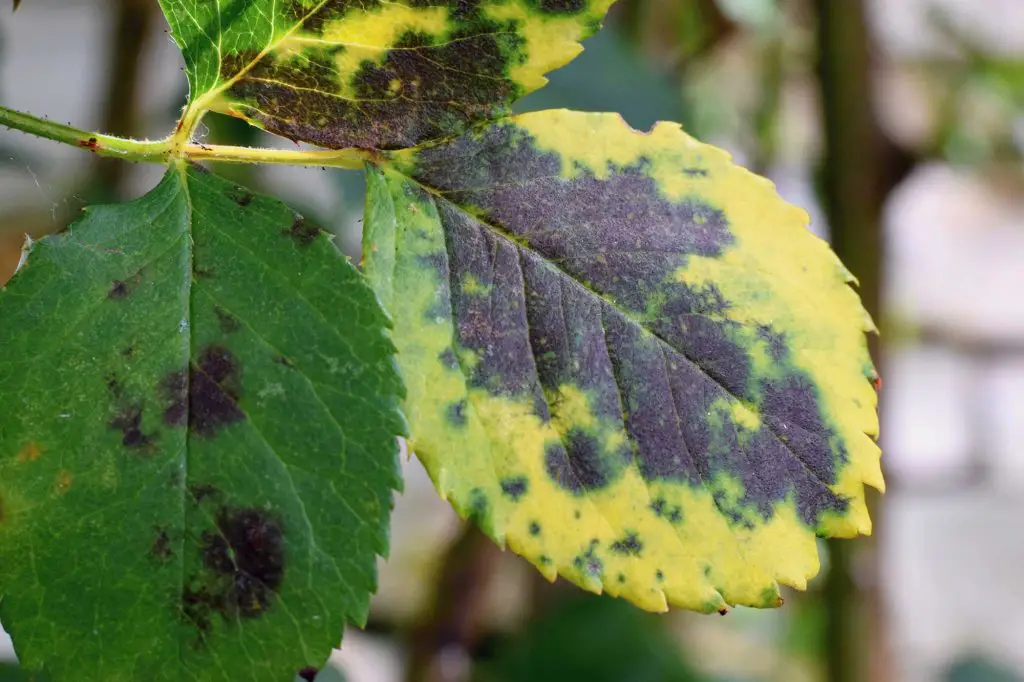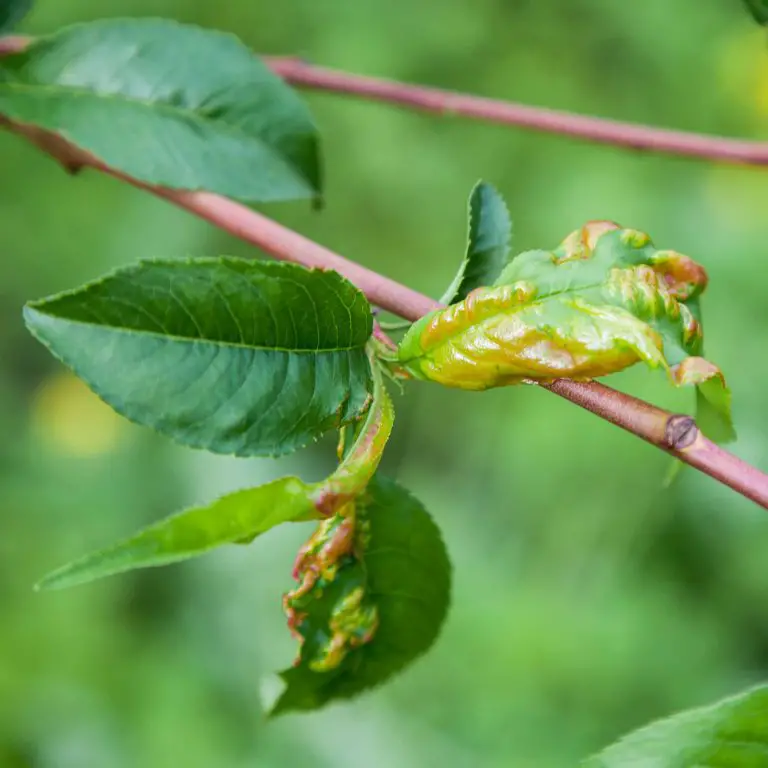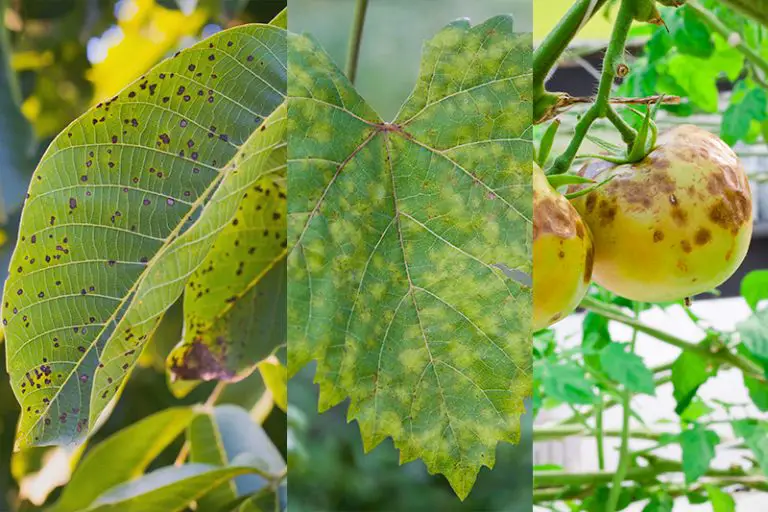Eliminate Blackspot On Roses
IF ROSES ARE YOUR FAVORITE FLOWER, THEN, LIKE ME, YOU’VE PROBABLY WONDERED, “HOW CAN I GET RID OF BLACKSPOT ON ROSES THE EASY WAY?“
Because blackspot on roses can certainly ruin the looks of a beautiful rose shrub in very little time, I would cringe when I would see those black spots first appearing on the bottom leaves of my rose shrub.
In this picture of a blackspot on a rose leaf, you can see how the blackspots could quickly take over and suck all the juice out of the leaf.

I knew that if I did not take care of the situation right away, pretty soon these black spots would be all over the shrub(s) and would suck the life out of each leaf they landed on. Nothing looks worst than a “leafless” rose shrub in the middle of the summer. I had to find a solution.
Eliminating Blackspot On Roses With Baking Soda (potassium bicarbonate)
I was wondering what to do when one day I came across the Garden Sampler magazine. In it, Dorothy Reid, editor of The Garden Sampler magazine which is based in Peru, Vermont, suggested keeping a simple solution of 1 teaspoon baking soda to a quart of water mixed and ready for action in your garden. She further added that the spray stops fungal diseases on everything from roses to pumpkins.
However, Dorothy warns that no matter which recipe you use, you must start spraying your roses before disease symptoms start and continue monitoring and spraying at weekly intervals to prevent a problem such as blackspot on roses.
That means beginning a spraying system early in the spring and spraying the plants every week to keep the blackspot on roses at bay. Be sure to spray both the undersides of leaves as well as the tops.
Dorothy explains that while bicarbonates stop the spread of fungi, they can’t clean up a disease mess.
While Dorothy’s simple recipe is effective at combating fungal diseases such as black spots and powdery mildew, there are other recipes with baking soda that work as well.
A Stronger Recipe To Eliminate Blackspot On Roses
I have personally used the baking soda recipe given by Dr. Thomas A. Zitter, a professor in the Cornell University Department of Plant Pathology, a recipe in which horticultural oil has been included.
However, you must be cautious with this one. Professor Zitter adds that this recipe with the oil should be used only occasionally, for some plants may be injured by repeated applications of oil.
Because I did not want to take any chances of ruining my rose bushes, I used this recipe only in the spring before the heat set in. Springtime is the best time to use the recipe with the horticultural oil because that’s when you need to further block any overwintering blackspot on roses, and the oil will help the solution stay on the leaves.
Here’s the recipe:
- 1 tablespoon baking soda or potassium bicarbonate
- 1 tablespoon horticultural oil
- 1 gallon water
- 1 gallon backpack or pump sprayer
- Mix all ingredients in the sprayer and spray the underside and top of all leaves.
Another recipe is Garrett’s garlic/pepper blend:
In a blender half filled with water, add two garlic cloves and two hot peppers that have been chopped up. Blend on high for a few minutes, then strain out the garlic and pepper bits. When that’s done, mix the remaining liquid with enough water to make 1 gallon of spicy concentrate and store it. When you wish to spray, use 1/4 cup of this concentrate and mix it with one gallon of water, and add two tablespoons of molasses to help the mixture stick to the leaves.
When I first read about adding the molasses, I hesitated. However, I found out through experience that ALL plants just love having the molasses. There is no residue; the plants just absorb it and flourish.
A second way to avoid having blackspot on your roses…
…is to protect your rose bushes from fungal diseases by planting 4 garlic bulbs in a circle around each plant. You must plant the bulbs 6 inches from the rose. Be careful not to disturb the rose’s roots. For younger roses, 2 bulbs would suffice.
Obviously, this procedure should be done BEFORE the blackspot takes over. It might even be a good idea to have the garlic growing around your rose bushes AND follow Dorothy’s advice regarding keeping the spray can with a baking soda mixture on hand. You could then have beautiful roses…and your own garlic to eat.
One last tip: You don’t want the fungus to get splashed back onto your bushes when you’re watering your plants. Therefore, be sure to pick up and destroy any leaf which has been ruined by blackspot and has fallen to the ground (do not throw these in the compost).
Hopefully, these recipes taken from the book Great Garden Formulas by Editors Joan Benjamin and Deborah L. Martin will help you get rid of any and all blackspot on roses – or on any other plant for that matter.


